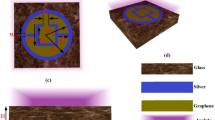Abstract
Although several in vivo blood glucose measurement studies have been performed by different research groups using near-infrared (NIR) absorption and Raman spectroscopic techniques, prospective prediction has proven to be a challenging problem. An important issue in this case is the demonstration of causality of glucose concentration to the spectral information, especially as the intrinsic glucose signal is smaller compared with that of the other analytes in the blood–tissue matrix. Furthermore, time-dependent physiological processes make the relation between glucose concentration and spectral data more complex. In this article, chance correlations in Raman spectroscopy-based calibration model for glucose measurements are investigated for both in vitro (physical tissue models) and in vivo (animal model and human subject) cases. Different spurious glucose concentration profiles are assigned to the Raman spectra acquired from physical tissue models, where the glucose concentration is intentionally held constant. Analogous concentration profiles, in addition to the true concentration profile, are also assigned to the datasets acquired from an animal model during a glucose clamping study as well as a human subject during an oral glucose tolerance test. We demonstrate that the spurious concentration profile-based calibration models are unable to provide prospective predictions, in contrast to those based on actual concentration profiles, especially for the physical tissue models. We also show that chance correlations incorporated by the calibration models are significantly less in Raman as compared to NIR absorption spectroscopy, even for the in vivo studies. Finally, our results suggest that the incorporation of chance correlations for in vivo cases can be largely attributed to the uncontrolled physiological sources of variations. Such uncontrolled physiological variations could either be intrinsic to the subject or stem from changes in the measurement conditions.




Similar content being viewed by others
References
Klonoff DC (1997) Diabetes Care 20:433–437
Roe JN, Smoller BR (1998) Crit Rev Ther Drug Carrier Syst 15:199–241
Sullivan SJ, Maki T, Borland KM, Mahoney MD, Solomon BA, Muller TE, Monaco AP, Chick WL (1991) Science 252:718–721
Charles MA (1999) Diab Technol Ther 1:89–96
Khalil OS (2004) Diab Technol Ther 6:660–697
Tuchin VV (2009) Handbook of Optical Sensing of Glucose in Biological Fluids and Tissues. CRC Press, Boca Raton, FL
Berger AJ, Itzkan I, Feld MS (1997) Spectrochim Acta A 53:287–292
Cote GL, Fox MD, Northrop RB (1992) IEEE Trans Biomed Eng 39:752–756
Maruo K, Tsurugi M, Tamura M, Ozaki Y (2003) Appl Spectrosc 57:1236–1244
Heise HM, Marbach R, Koschinsky TH, Gries FA (1994) Artif Organs 18:439–447
Samann A, Fischbacher CH, Jagemann KU, Danzer K, Schuler J, Papenkordt L, Muller UA (2000) Exp Clin Endocrinol Diabetes 108:406–413
Brereton RG (2007) Applied Chemometrics for Scientists. Wiley, Chichester, West Sussex, England
Thissen U, Ustun B, Melssen WJ, Buydens LMC (2004) Anal Chem 76:3099–3105
Arnold MA (1996) Curr Opin Biotechnol 7:46–49
Liu R, Chen W, Gu X, Wang RK, Xu K (2005) J Phys D Appl Phys 38:2675–2681
Berger AJ, Koo TW, Itzkan I, Horowitz G, Feld MS (1999) Appl Opt 38:2916–2926
Lambert JL, Pelletier CC, Borchert M (2005) J Biomed Opt 10:031110–031118
Enejder AMK, Scecina TG, Oh J, Hunter M, Shih WC, Sasic S, Horowitz GL, Feld MS (2005) J Biomed Opt 10:031114-1–031114-9
Chaiken J, Finney W, Knudson PE, Weinstock RS, Khan M, Bussjager RJ, Hagrman D, Hagrman P, Zhao Y, Peterson CM, Peterson K (2005) J Biomed Opt 10:031111-1–031111-12
Barman I, Singh GP, Dasari RR, Feld MS (2009) Anal Chem 81:4233–4240
Barman I, Kong CR, Dingari NC, Dasari RR, Feld MS (2010) Anal Chem 82:9719–9726
Barman I, Kong CR, Singh GP, Dasari RR (2010) J Biomed Opt 16:011004-1–011004-10
Barman I, Kong CR, Singh GP, Dasari RR, Feld MS (2010) Anal Chem 82:6104–6114
Liu R, Deng B, Chen W, Xu K (2005) Opt Quant Electron 37:1305–1317
Arnold MA, Burmeister JJ, Small GW (1998) Anal Chem 70:1773–1781
Cheong W, Prahl S, Welch AJ (1990) IEEE J Quantum Electron 26:19
Shih WC (2007) Quantitative biological Raman spectroscopy for non-invasive blood analysis, Massachusetts Institute of Technology, Dept. of Mechanical Engineering
Enejder AMK, Koo TW, Oh J, Hunter M, Sasic S, Feld MS, Horowitz GL (2002) Opt Lett 27:2004–2006
Johnson NL, Kotz S, Balakrishnan N (1996) Continuous Univariate Distributions, vol 2. Wiley, New York, NY
Qi D, Berger AJ (2007) Appl Opt 46:1726–1734
Clarke WL, Cox D, Gonder-Frederick LA, Carter W, Pohl SL (1987) Diabetes Care 10:622–628
Wulfert F, Kok WT, Smilde AK (1998) Anal Chem 70:1761–1767
Acknowledgments
This work was supported by the NIH National Center for Research Resources (Grant No. P41-RR02594) and a grant from Bayer HealthCare, LLC. The animal model study was performed at the Indiana University-Purdue University Fort Wayne facility in collaboration with the Bayer HealthCare, Diabetes Care division. Specifically, the animal model dataset used in this article was acquired by Dr. Mihailo V. Rebec and his clinical team. One of the authors, IB, acknowledges the support of Lester Wolfe Fellowship from the Laser Biomedical Research Center.
Author information
Authors and Affiliations
Corresponding author
Additional information
The author Michael S. Feld is deceased
Rights and permissions
About this article
Cite this article
Dingari, N.C., Barman, I., Singh, G.P. et al. Investigation of the specificity of Raman spectroscopy in non-invasive blood glucose measurements. Anal Bioanal Chem 400, 2871–2880 (2011). https://doi.org/10.1007/s00216-011-5004-5
Received:
Revised:
Accepted:
Published:
Issue Date:
DOI: https://doi.org/10.1007/s00216-011-5004-5




